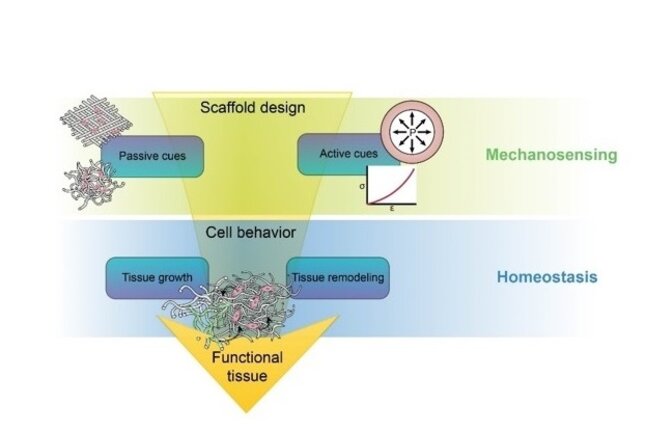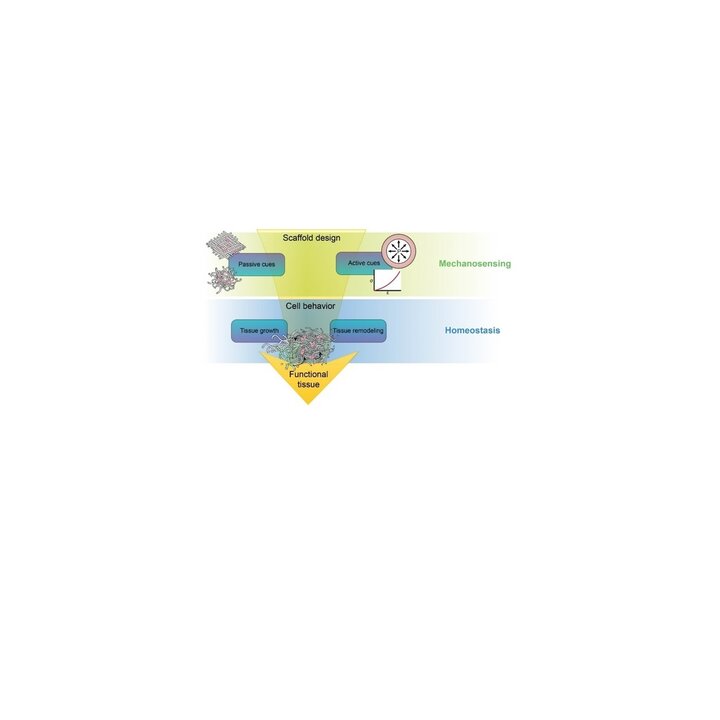
An essential aspect of all biological processes in the human body—from organ function to disease progression—is that the resident cells are always physically and mechanically interacting with their environment: the “matrix”. In fact, it has been increasingly recognized that the physical properties of the matrix (e.g., stiffness, microstructure, flow, ligand distribution) plays a critical modulatory role in various cell functions, such as polarization, differentiation, migration, and gene/protein expression. Thus, a smart design of instructive biomaterials provides an attractive avenue to direct cell behavior in tissue engineering and regenerative medicine. The challenge, however, is twofold. First, we still lack the fundamental knowledge about how passive and active cues from the environment are sensed by the cell. Second, we need to understand interplay between multiple cues that coexist in vivo results in the temporal evolution at the tissue and organ levels. The interdisciplinary research in our group addresses these two questions using an in vitro experimental and analytical approaches.
